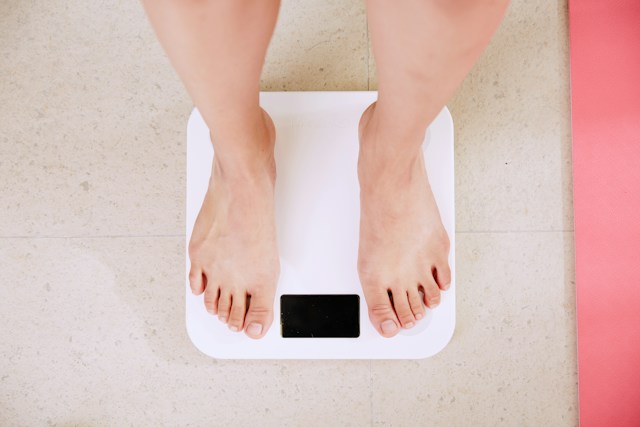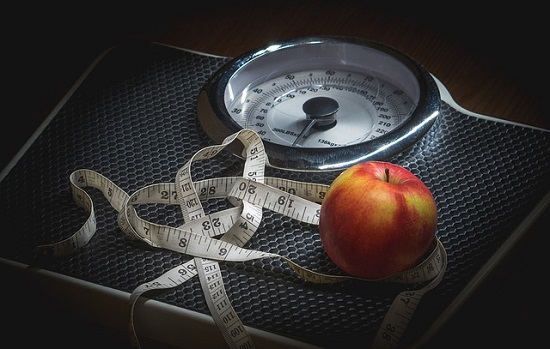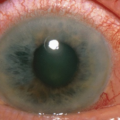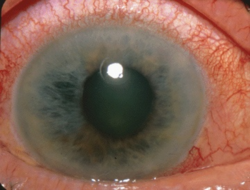Are you struggling with your weight? Are you eating well and exercising but still not losing weight? Well then, it might be time to consider what’s on or in what you are eating or what you are eating eats. Sound complicated? It’s not. An emerging body of evidence shows a strong link between eating foods sprayed with commercial herbicides and eating meats raised on commercial feedlots (that are born and bred on a cocktail of chemicals) and obesity.
After years of eating highly processed and chemically laden fruits, vegetables and meats, the bacteria in our guts shift radically towards a species that emit what are called endotoxins. These endotoxin releasing bacteria induce inflammation, which then shifts a series biochemical pathways that favor fat storage as a protective and compensatory reaction to the steady state of chemicals coming from our diet and the lack of nutrients contained within these foods. Indeed, what we now call autoimmune reactions, the continued elevation in inflammation and antibodies, may be a result of the food we eat (and the other pharmacological and environmental chemical exposures). It turns out, that the constant state of inflammation many of us find ourselves in is the body’s way of trying to clear those toxins.
With obesity in particular, there have been several interesting studies published over the last couple years providing clear links between chemical exposures and fat storage. Whether the body stores fat or uses fat depends upon the balance of good and bad bacteria in the gut and that balance is predicated heavily upon nutrient availability and toxic exposures. High calorie, low nutrient, chemically dosed foods, shift bacterial communities that increase fat storage and inflammation. Not only that, but since gut bacteria metabolize dietary vitamins and even synthesize vitamins from scratch on their own, the high fat, low nutrient, chemically laden diet downregulates the vitamin producing bacteria, in favor of the more pathogenic and opportunistic bacteria. This further depletes nutrient stores while enhancing inflammation. The cycle becomes very difficult to end, as anyone struggling to lose weight knows all too well. There is hope, however. New research from disparate sources demonstrates how reducing the toxic load and increasing nutrient availability can re-calibrate fat usage and storage parameters.
Gut Bacteria and Obesity
Just a few years ago, researchers from Shanghai, China identified one of the gut bacterial over growths associated with obesity and published their results in a paper entitled: An opportunistic pathogen isolated from the gut of an obese human causes obesity in germfree mice. Called enterobacter clocae, the endotoxin producing bacteria was found overpopulated in the gut of a severely obese patient who was also insulin resistant, hypertensive and suffered from the array of obesity related health issues. The enterobacter clocae pathogens made up 35% of the total bacterial content in this patient’s gut; a huge bacterial load. Knowing that enterobacter emitted endotoxins and that endotoxins were associated with inflammation and insulin dysregulation, the researchers speculated that a reduction in the enterobacter population would correspond with a reduction in weight and the other health issues. They were correct. With a special diet and traditional Chinese herbs, weight loss and health parameters changed along with the reduction in toxic load. After 9 weeks, enterobacter represented only 1.7% of the total gut bacteria and at 23 weeks, .32%. The total weight loss during that period was 50kg or 110lbs.
Could something as simple as reducing the opportunistic enterobacter via diet be the solution to obesity? To answer this question, the researchers went back to lab and designed an experiment to test the hypothesis, only they did it in the reverse. They asked if enterobacter was a causative factor in obesity, could they induce obesity in mice bred specifically to resist excessive weight gain simply by increasing the bacterial load?
From the fecal matter of the obese patient, the researchers isolated the particular strain of enterobacter clocae called B29. They took the B29 and inoculated four groups of seven, germ-free mice; B29 inoculated plus normal diet or high fat diet and non-inoculated normal or high fat diet. Germ-free mice are a strain of mice that are microorganisms free and raised in isolates. They are resistant to obesity even when fed a high fat diet.
One mouse from each of the inoculated groups died immediately after the inoculation indicating the toxic nature of this bacteria. Remember, this strain of bacteria represented 35% of the original patient’s gut bacteria, likely acquired gradually over the course of lifetime. During the first week, all of the inoculated mice lost weight, again indicating the mounting immune response. Anorexia, is often a sign of illness as the body reallocates resources towards fighting an infection.
Subsequently, and after the immediate anorexic responses, both groups of inoculated mice gained excessive weight, whereas the non-inoculated mice did not. The inoculated plus high fat diet group not only gained significantly more weight but expressed higher levels of enterobacter inflammatory markers and insulin resistance showing an interaction between diet and bacterial growth. The researchers speculate that the high fat diet facilitates the transfer of this bacteria to the bloodstream and increases the systemic inflammatory reaction. The inflammation then shifts the body towards fat storage via a range biochemical cascades meant to fight the infection but that also induces other reactions along the way; reactions we consider hallmarks of metabolic disease including high cholesterol, insulin resistance, liver damage, decreased adiponectin (satiety hormone – low adiponection means one is always hungry) and even increased amyloid A proteins associated with Alzheimer’s. This study, albeit small and in need of replication, shows us that when the balance of good to bad bacteria shifts, obesity is induced. It doesn’t tell us, however, how environmental chemicals in and on food impact this bacterial shift. For that we have to go to a couple other reports.
Nutritional Perils of the Western Diet
The Western diet has become a synonymous with highly processed foods that barely resemble actual food in nutrient and DNA composition. Indeed, in our efforts to produce the largest and prettiest produce, we’ve cultivated out 95% of the genetic variation from food crops; reducing to almost nothing the ~200,000 plant metabolites that provide nutrition. To make matters worse, we have substituted nutritionally rich and diverse crops with ones that originate from plant seeds engineered with bacterial RNA and DNA and are laced with glyphosate, adjuvants and other chemicals. In addition, all commercial meat production relies heavily on genetically modified, glyphosate-doused feed to grow the cattle, combined with prophylactic antibiotics, growth hormones and a cocktail of other chemicals that compensate for the deplorable conditions under which Western foods are produced. The genetically modified, chemically laden food stuffs are then sold to the consumer as fruits, vegetables, meats and dairy or processed even further into other food-like products. From beginning to end of the food chain are exposures to chemicals and foreign bacterial DNA that our bodies cannot accommodate and that provide only limited nutrients.
So, in addition to the direct exposure to chemical toxicants, conventionally grown Western foodstuffs also impair health by reducing vital nutrient content required for even the most basic cell functioning. By disrupting the balance between good gut bacteria and bad or pathogenic bacteria conventionally grown further disrupts nutrient availability while increasing inflammation and the cascade of ill-health is set in motion.
Metabolic Starvation in the Face of Obesity
As we’ve covered previously, every cell in the body requires energy to exist and function. That energy comes in the form of mitochondrial adenosine triphosphate or (ATP). The production of ATP requires nutrients as co-factors and for enzyme functioning. Many of these nutrients come from diet and others are produced de novo or from scratch by the bacteria in our gut. Glyphosate grown foods attack both. Glyphosate reduces the nutrient availability of foodstuffs, even in the less processed, presumed healthy fruits and vegetables, while simultaneously killing the good bacteria in our guts. Glyphosate is a potent bactericide that in a perverse twist of design preferentially targets the beneficial bacteria while leaving untouched the opportunistic and pathogenic bacteria, like enterobacter clocae. So while eating a healthy diet might lead to weight loss and improved health outcomes under normal circumstances, when that diet consists of conventionally grown foods, with genetically engineered seeds capable of withstanding the toxic insults of glyphosate and its adjuvants, neither the diet nor the disrupted intestinal flora can produce the nutrients required to enable healthy cellular metabolism. The GM-glyphosate combo induces a state of metabolic starvation and through a number of survival pathways and shifts towards fat storage rather than fat loss as a secondary source of energy.
Critical to this entire equation is the fact that the bactericidal properties of glyphosate disrupt normal gut microflora. Glyphosate directly shifts the balance of power away from the healthy, vitamin and mineral factories that feed the body’s enzymes and mitochondria, towards more pathogenic bacteria that are resistant to glyphosate and may even feed on it, further evoking metabolic starvation. As the bacterial balance continues to shift, disease appears and inflammation ensues. Those diseases are then treated pharmacologically with drugs that also disrupt gut bacteria, deplete nutrient stores and damage mitochondria. The cascade of ill-health becomes more and more difficult to end using traditional approaches. Moreover, where and how disease appears is as much based upon individual predispositions as it is on nutrition and other exposures, making the complexity of modern illness something modern medicine is not accustomed too. In other words, these diseases do not fit neatly into the one disease, one medication model, and thus, very rarely respond favorably to treatment.
To Lose Weight, Feed the Body What it Needs: Nutrients.
Despite the complexity of the interactions that come together and create the chronic health issues we face today, there is one variable that can be controlled that will mitigate obesity and ill-health directly: eating, or more specifically, what is eaten. The simple act of cleaning up one’s diet, of moving away from processed foods and away from conventionally grown foods towards organics, can have a tremendous effect on reducing the body’s toxic load and subsequent inflammation, weight gain, and disease. Similarly, replacing needed micronutrients so that bacterial and mitochondrial functioning can come back online and switch from fat storage to fat/energy burning will be critical. This will take time, however, and the transition towards health may be slow. Obesity and ill-health did not emerge overnight and they will not disappear overnight. Finally, we have to recognize that there is no one-size-fits-all, silver bullet, diet vitamin or diet pill. Each of us adapts to chemical exposures and the lack of nutrition individually and uniquely. So each of us requires a different cocktail of nutrients to move forward. Which nutrients and at what doses should be determined individually and may involve some degree of trial and error. As the Western diet is devoid of critical vitamins, minerals and amino acids, it is likely many individuals are suffering from broad based deficiencies. It is also likely, that restoring what has been absent chronically will go a long way towards health and healing, regardless of one’s particular health issues. So if you are struggling with obesity and other health issues, feed your body what it needs to function – nutrients.
We Need Your Help
More people than ever are reading Hormones Matter, a testament to the need for independent voices in health and medicine. We are not funded and accept limited advertising. Unlike many health sites, we don’t force you to purchase a subscription. We believe health information should be open to all. If you read Hormones Matter, like it, please help support it. Contribute now.
Yes, I would like to support Hormones Matter.
Photo by i yunmai on Unsplash.
This post was published originally on Hormones Matter on July 28, 2014.























